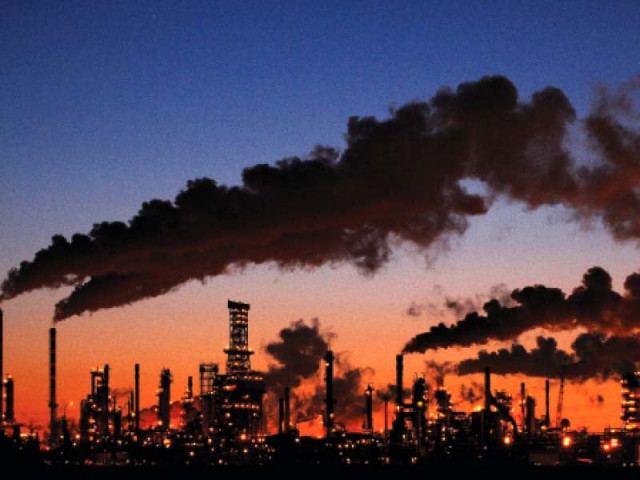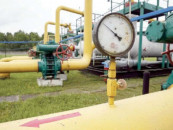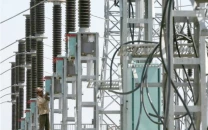Climate change causes $3.8b loss
Govt may take steps to encourage businesses to work towards zero emissions

Climate change is worsening throughout the world and it may emerge as the next pandemic. While human lives and the planet are at risk, Pakistan’s economy has also been hit hard by the rising temperatures, sea level and pollution.
Climate change has been causing an average economic loss of about half a percentage point, or $3.8 billion, a year to Pakistan for the past two decades. Now, global buyers are mounting pressure on local exporters to take policy measures to combat the problem.
The government and the central bank may adopt measures to encourage businesses to work towards zero carbon emissions by offering incentives and attaching conditions.
“Over the past two decades, climate change in Pakistan resulted in a loss of more than half a per cent per unit of GDP (gross domestic product), resulting in $3.8 billion of annual economic losses,” said Pakistan Stock Exchange (PSX) Chairperson Shamshad Akhtar.
“I was very encouraged recently to listen to the top export-oriented (Pakistani) companies because of the pressure coming from the international markets that are already planning to move towards net zero emissions and invest in renewables,” Akhtar, who is also the former central bank governor, added.
Speaking at “The Future Summit – What’s Coming Next” on Wednesday, she said that global uncertainties had increased following every episode of crisis since the 2008 economic and financial crisis.
Read ‘Balochistan to tackle climate change with UN help’
The Covid-19 pandemic has been a rude awakening given the unprecedented loss of output and reversal of development gains witnessed throughout the world. “With the climate scenario worsening, the next looming crisis is to emanate from climate change,” she said.
The Global Climate Risk Index ranks Pakistan as the fifth most climate vulnerable country with 152 extreme weather episodes over the past decade or so.
Pakistan’s greenhouse gas emissions grew 50% with CO2 reaching 200 million tons in 2019.
Energy and transport are the biggest emitters followed by the industry, agriculture and land practices. Air pollution is costing Rs50 billion, not to mention the health issues.
Textile, Pakistan’s largest industry and exporter, is globally known to have contributed 6-8% of the emissions and 70% of it is attributed to the upstream energy-intensive material processing.
“In the wake of these threats and vulnerabilities, the cost of climate in action is going to be larger than the cost of climate action,” she said.
“The share of public expenditure made to combat climate change is barely 6-7%.”
Only a segment of the corporate sector subscribes to sustainable reporting and a few of them are committed to zero emissions by 2030 and that happened during the COP26. However, no regulatory agency of Pakistan requires borrowers to follow climate disclosure.
So, future can be safeguarded by assigning priority to sustainability and recognising that meeting the needs of present without compromising the needs of future generation has high payoffs for nations. This also requires political and corporate leaders to have an eye on long term growth and probability to safeguard the planet and people. A host of measures, if adopted, could be game changer for Pakistan.
Firstly, fundamental amendments to policy, legal and regulatory frameworks should be introduced. “I hope we get them in order before the climate havoc falls on us,” she said.
Read more MoU on climate
“We have to offer incentives to the industry to invest in safeguarding environment, ecology and biodiversity.”
“Second, mainstreaming and integrating sustainability with emphasis on allocating funds for climate adaptation and climate mitigation across our planning and budgetary processes is required.”
The third important thing is to develop a robust financing framework through resource mobilisation to generate the much needed fiscal space, leverage private finance and mobilise green climate and sustainable finance if needed. “We have an agency in Pakistan which has been promoted by Karandaaz, one of the companies I am affiliated with,” she said.
Fourth, we have to strategise and effectively manage crisis prevention. “These measures can facilitate Pakistan to raise its investment and saving levels.”
Investment to GDP ratio has been very volatile in Pakistan. It has declined from 17.3% in fiscal year 2018 to 15.2% of GDP in 2021. “The low investment to saving is really the underlying cause of our historic unsteady and unsustainable growth path.”
“Ofcourse Pakistan needs to double its investment to GDP ratio to 30% to enhance investment in sustainable climate resilient and inclusive infrastructure to protect our nature and ecology.”
Renewables is the way to go and we have a renewable policy of 1990s which has not been effectively implemented.
Published in The Express Tribune, January 14th, 2022.
Like Business on Facebook, follow @TribuneBiz on Twitter to stay informed and join in the conversation.



















COMMENTS
Comments are moderated and generally will be posted if they are on-topic and not abusive.
For more information, please see our Comments FAQ